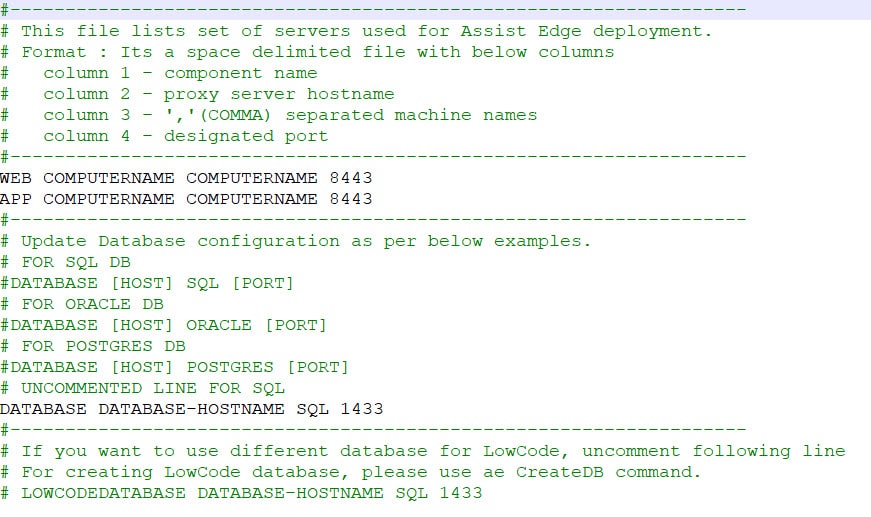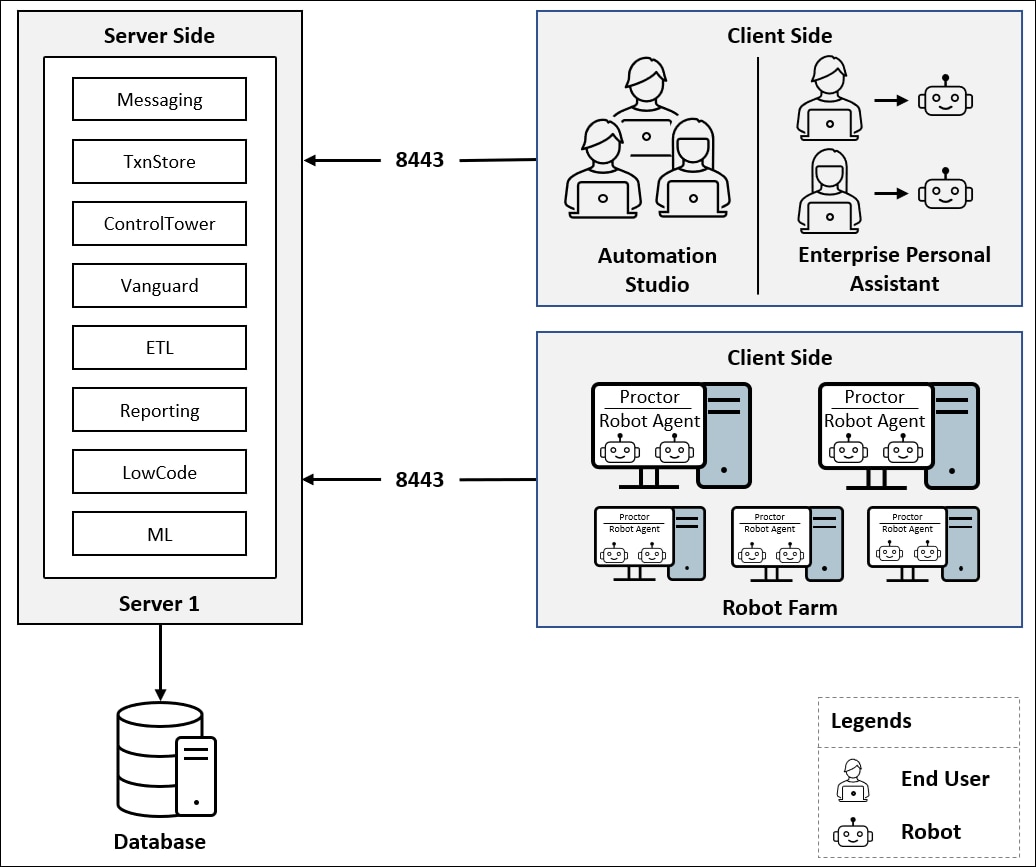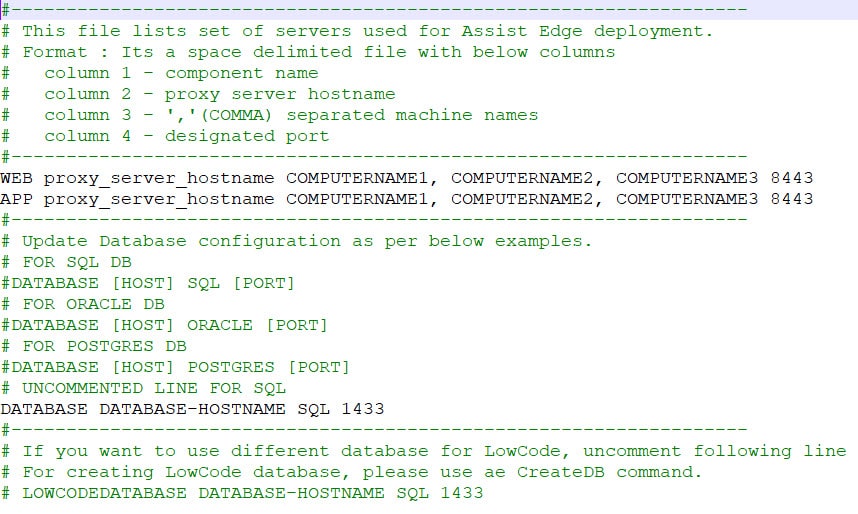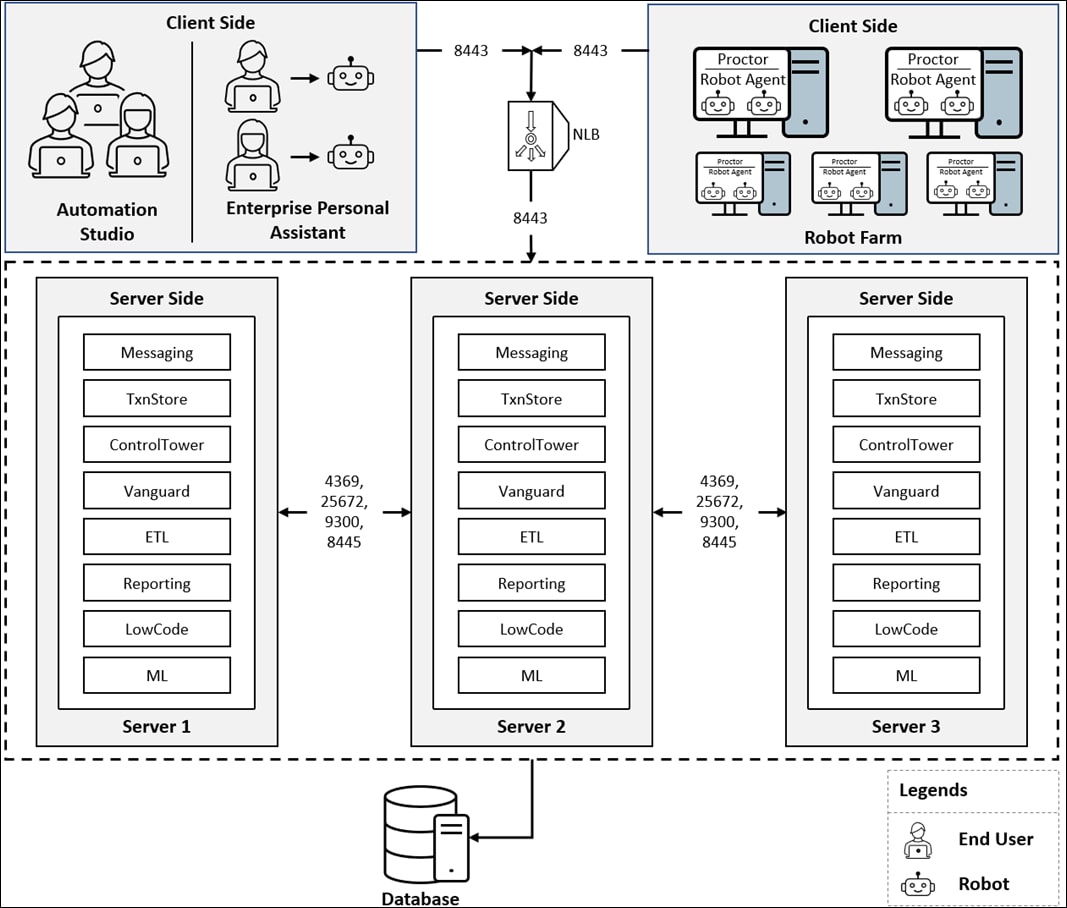Understanding Deployment Models
AssistEdge RPA offers two types of deployment models to cater to your business need. It helps you to achieve high availability, also known as HA, that ensures availability of data and resources at the time of situations like failure of servers, high traffic and so on.
You can also achieve horizontal scalability by adding more servers to run your client-side components.
The deployment models are categorized into:
Single Server Deployment
A Single server deployment consists of single servers where all components are deployed on a single machine.
|
NOTE: |
High availability is not achievable in this model. |
Single server deployment is typically done for environments such as development, quick installation for rapid proof of concepts and so on.
Below is the sample configuration for single system deployment:

Below is the sample AssistEdge RPA single server deployment model based upon the above configurations:

Clustered Deployment
Clusters are groups of servers that are managed together and participate in workload management. A Clustered deployment consists of multiple servers where load is distributed among nodes by load balancer.
|
NOTE: |
This model is recommended for use in Production. |
Below is the sample configuration for clustered deployment:

Below is the sample AssistEdge RPA clustered deployment model based on the above configurations:
